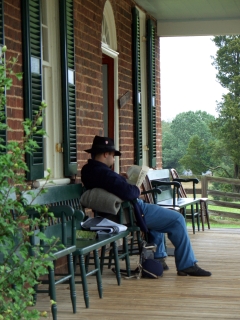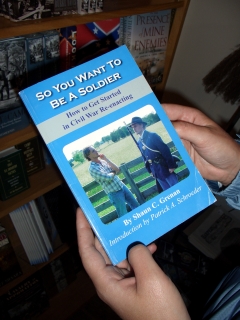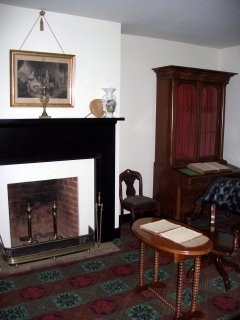NPS Website; Local Website
WHAT IS IT?
 Rural Virginia town where, on April 9, 1865 Robert E. Lee surrendered the Army of Northern Virginia to Union commander Ulysses S. Grant, ending the American Civil War.
Rural Virginia town where, on April 9, 1865 Robert E. Lee surrendered the Army of Northern Virginia to Union commander Ulysses S. Grant, ending the American Civil War.BEAUTY (6/10)
The quaint village of Appomattox Court House remains locked in 1865, its buildings, roads, fields and trees. You see the town as Lee and Grant did.
The vivid natural colors are the only ineffective part of your time travel back to 1865. Our solution: take all your pictures in black and white. Then, and only then, will the setting match the photos taken at the time of the surrender.
HISTORICAL INTEREST (7/10)
Appomattox is one of American history’s most resonant names. It is one we memorize in history class, attach mythic-level importance to and lodge into our imagination. We see Lee and Grant on horseback, we see their forlorn faces, we visualize defeat and triumph, we know that it was here that they ended our bloodiest war.
Appomattox remains our place of closure. We flock to the reconstructed rural Virginia Court House village, we follow Lee’s retreat route, we know that Fort Sumter is where the War began, and Appomattox is where it ended. If only Reconstruction could have been so simple.
CROWDS (7/10)
More than a few other people were meandering their way back into 1865 and through the charming old village of Appomattox Court House. We half expected the diminutive U.S. Grant to appear.
EASE OF USE/ACCESS (2/5)
The town of Appomattox is located at the point in Virginia furthest from an Interstate. Only twisty country roads lead here. It is not that the Site is far from anything, it is just not that close. Charlottesville and I-64 are 75 miles to the north via Virginia Route 20. Richmond and I-95 are about 90 miles to the east via U.S. Route 60 and Roanoke is about 75 miles west and over the Blue Ridge Mountains via U.S. Route 460. The nearest large town is Lynchburg, some 25 miles westward.
The Park site consists of a reconstructed 1865 historic village, which must be traversed on foot. The VC and the village buildings are about a ¼-mile uphill stroll from the parking lot.
 CONCESSIONS/BOOKSTORE (5/5)
CONCESSIONS/BOOKSTORE (5/5)Appomattox’s stellar Civil War bookstore takes up two rooms in Clover Hill Tavern kitchen, an original building built in 1819. Lee and Grant probably never stepped into this kitchen but they surely must have seen it and would probably be amazed and oddly flattered at the innumerable books that have been written about them.
While Michael browsed the shelves, Gab was transfixed for over fifteen minutes with So You Want to Be a Soldier: How to Get Started in Civil War Re-enacting. Has Michael created a monster? Probably not. Gab was just amazed with the elaborate costumes and historical proclivities of the so-called vivandieres, female companions of the legendary Zuoaves brigade.
COSTS (3/5)
Entry is $4 per person or a maximum of $10 per car. The fee is waived if you have the National Parks Pass.
RANGER/GUIDE TO TOURIST RATIO (4/5)
We always appreciate when the Park Service posts additional Ranger in or around important buildings. Here, a Ranger stood inside the McLean House, site of the surrender, eager to answer questions. We talked for a good bit about the terms agreed upon in the surrender. Human interaction is so important in the give and take of learning and the knowledgeable educational Rangers are undoubtedly the Park System’s most prized jewel.
TOURS/CLASSES (6/10)
In addition to the excellent Ranger talk, we enjoyed the Museum exhibit that examined the accuracy of the paintings of the surrender and how they shaped our understanding of Lee and Grant. We also appreciated Appomattox’s many vignette-worthy anecdotes and the spectacular electric map. Robert E. Lee was surely no General Cornwallis.
FUN (6/10)
 To get to the Park Site, you need to walk up a short distance on an uphill dirt road from your car. The effect is to transport you back into time, into 1865. It works, but mainly because of the ace combination of original buildings and reconstructions.
To get to the Park Site, you need to walk up a short distance on an uphill dirt road from your car. The effect is to transport you back into time, into 1865. It works, but mainly because of the ace combination of original buildings and reconstructions.The McLean House would probably have survived the 150 years had it not been a victim of its own fame. In 1893, speculators dismantled the building with hopes of rebuilding it in Washington DC as a Civil War museum. Their plan failed and the dismantled bricks and wood planks never left Appomattox. Weather eroded the building parts before they could be put back in place. The current version was finished in the 1940’s using the original blueprint and dozens of the surrender’s commemorative photos and paintings.
WOULD WE RECOMMEND? (6/10)
Appomattox is a must-see destination for any Civil War buff. For those uninterested, Appomattox will not spark any new desires. History notes that Grant suffered from a post-partum like depression after the surrender. The Civil War traveler might also feel a sad sense of closure at Appomattox. So, save your visit until you have seen all the Civil War sites, even those tiny State Park sites in Tennessee and Missouri. It is always best to delay the physical conclusion even if you know how the War ends.
TOTAL 52/80
www.usa-c2c.com
© 2005